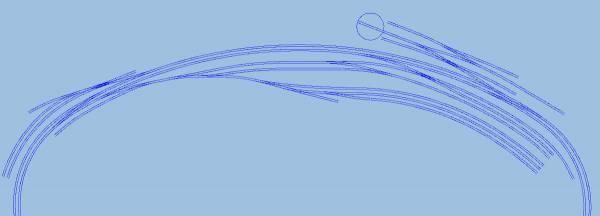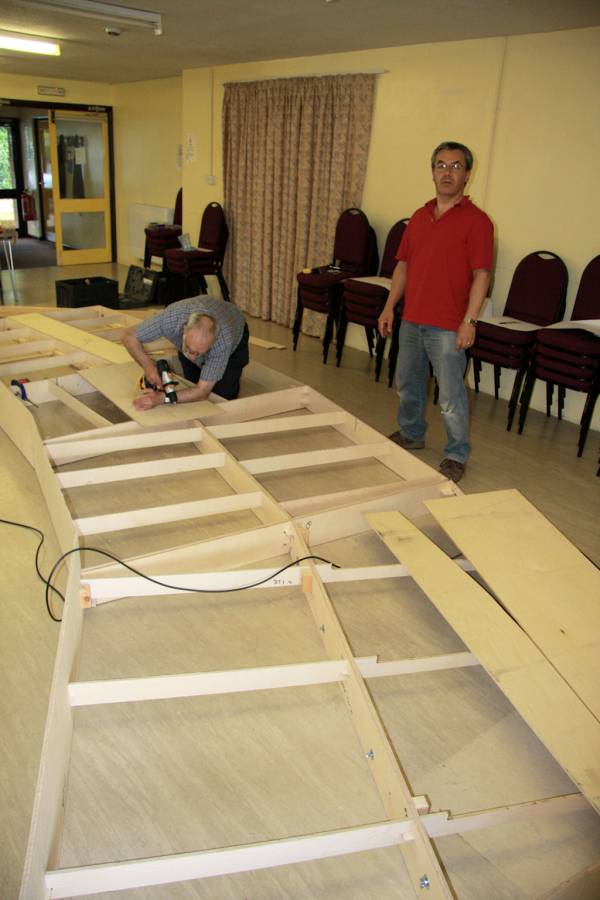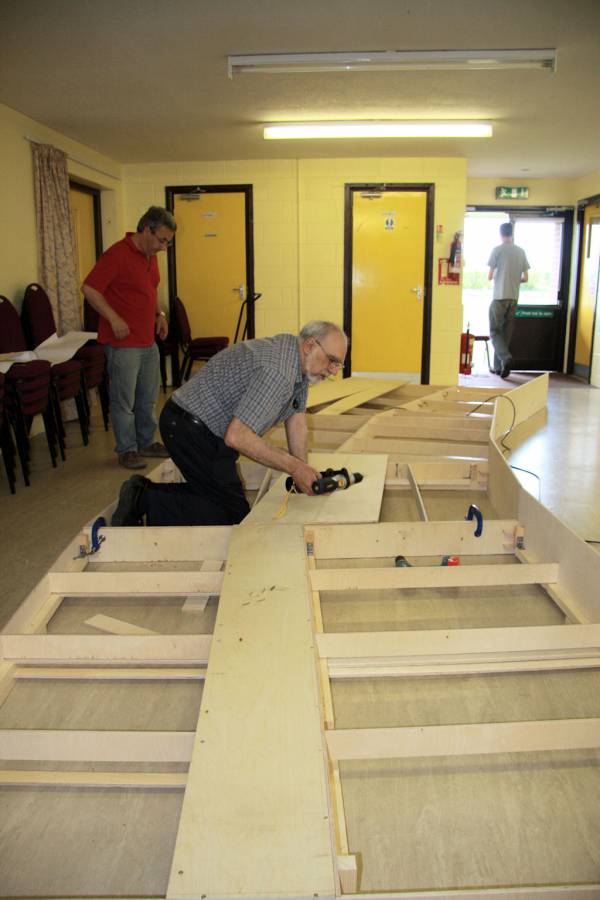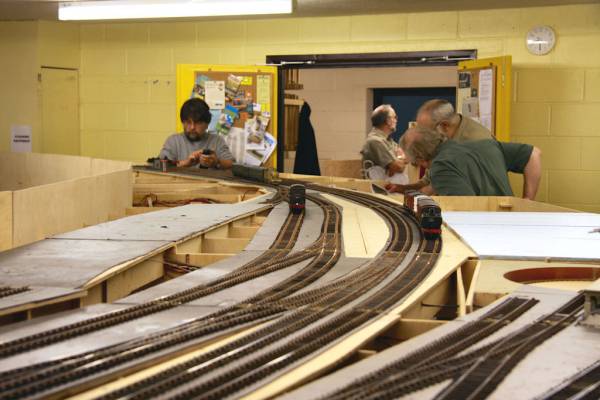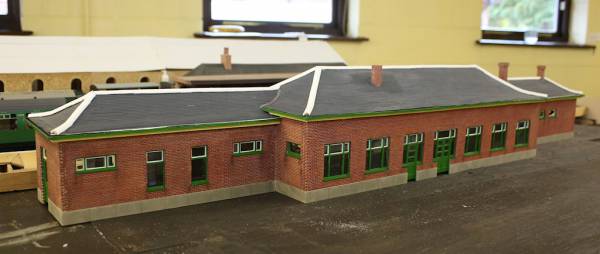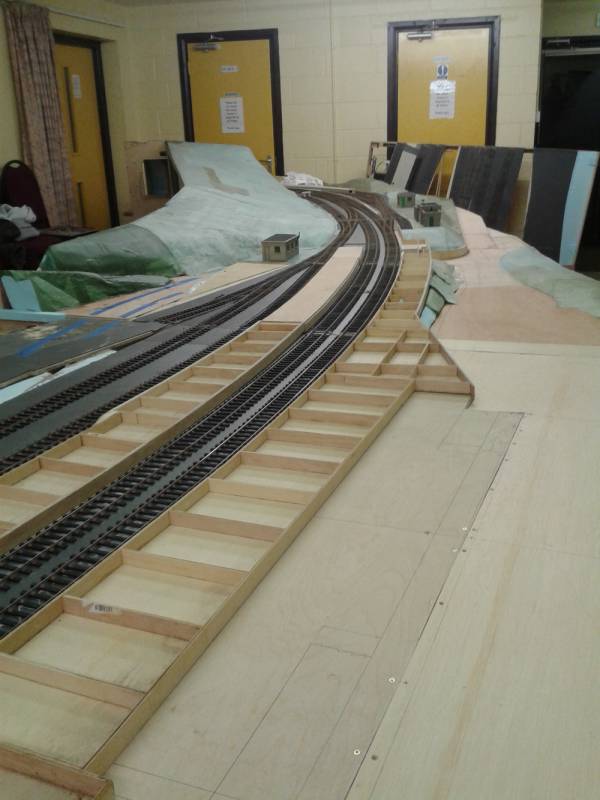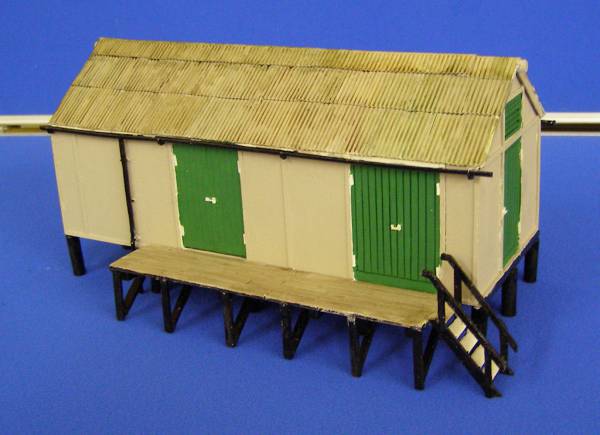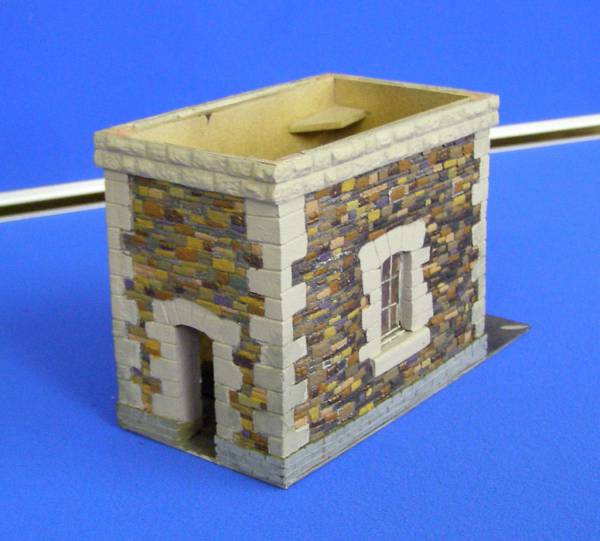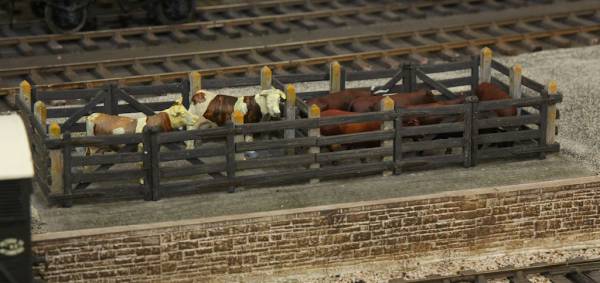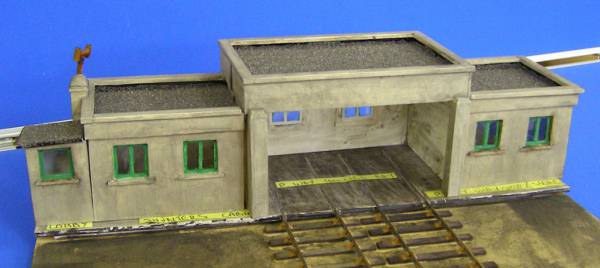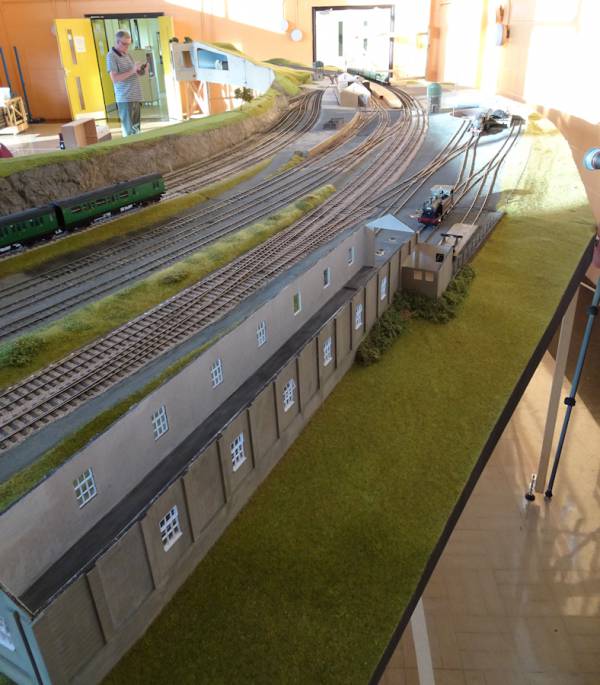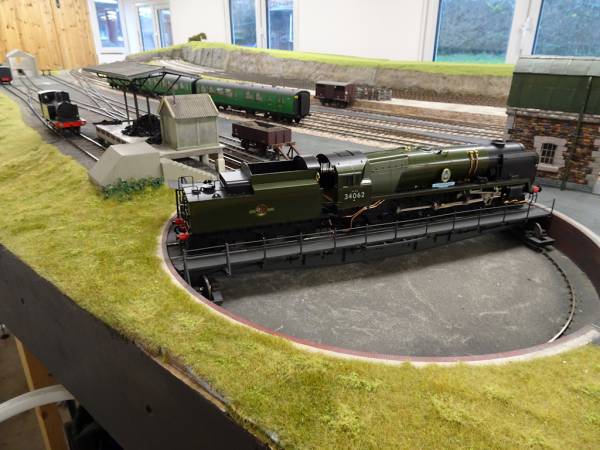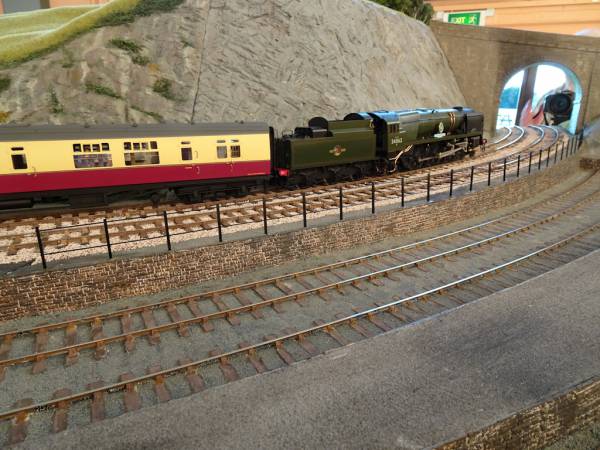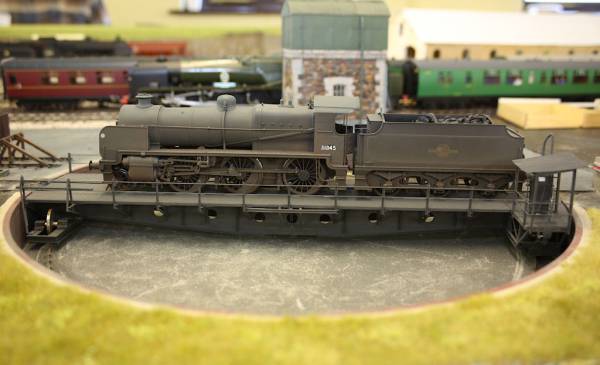Sidebar
Okehampton
The essential features of the layout are:
1. Double track main line.
2. 3 platforms, up main, down main and branch.
3. Single road engine shed.
4. 70' turntable fitted at Okehampton in 1947.
5. Coaling stage.
6. Goods shed and extensive goods sidings.
7. Military siding where troop trains and other vehicles would be loaded.
8. Proximity to Meldon Quarry where ballast was extracted. Hence ballast trains.
9. Okehampton was where the engine was changed. This will be of interest to an audience.
General View of Station and Approach Tracks
Track Plan
The layout has been designed for DCC control using existing club controllers. Club members also have DCC controls, and can lend them for operating.
The previous layout plan of Plymouth Friary was eventually rejected in favour of a more traditional layout based on Okehampton as this contains a freight yard, engine shed, station plus scenic elements - in other words more scope. The layout plan follows Okehampton pretty accurately, with some shortening of platform sides, sidings and engine shed.
Two main lines pass through the whole area, allowing passing trains to be shown. A third platform face gives access to the sidings and also provides potential for a branch line train to be brought into the station and sent back out again.
The engine shed adds interest and sits on the viewer side, where an operator can talk about the stock and layout. There is a turntable, coaling stage and shed. Okehampton was one of the first stations to receive one of the new 70' tables, and this will be modelled. Thus the period is very late 40s.
Two 3 road sidings allow for plenty of space for goods stock, shunting and movement. There is a goods shed as well.
A 6 or 8 road fiddle yard provides storage space. The boards here are 2' 8“ wide, the maximum that can be reached over. It would be useful if each road in the fiddle yard could receive or send a train to any one of the main lines. This may not be practical to achieve.
Baseboards under Construction. JA supervising!
The boards are made of extruded foam with sides reinforced using ply, 9mm. The main lines sit on ply bases with a vertical reinforcing piece underneath, with foam on either side. Cork or foam has been placed on top. Track is Peco in the fiddle yard but, in the viewing area, hand built Exactoscale track has been used. The hand built points were much cheaper than Peco, but the plain track more expensive. Peco is useful to reduce the time to build the fiddle yard and also increase the reliability. There are some double slips here which were complex to build. There are only 2 double slips in the main layout.
The boards were designed on a CAD program so that all the dimensions could be accurately calculated. The 9mm birch ply was accurately cut using jigs to provide a kit of parts which were quickly assembled. The boards were built in sets of four to ensure that they match in size and shape. The layout is an oval shape so all the boards are different shapes and sizes to form the curve. Ply wedges were fitted into the corners to ensure the sides line up correctly. This was easier that machining softwood blocks of the correct angle. These blocks of four boards were then separated when the glue had set and the wedges cut off flush with the outside. At this stage the boards were quite flexible but have been filled with large sheets of Styrofoam (an extruded polystyrene not expanded polystyrene) to give a rigid (but lightweight) surface for the scenic areas. Track beds are made from a ply construction to ensure they cannot move under the weight of the trains.
Track Testing
All track on the scenic side is hand made from Exactoscale components. Rail is steel which stays cleaner at exhibitions compared to nickel silver but suffers from rust problems. The track design was done using Templot and printed on A3 sheets which are then used as templates for the track building.
Station Building
Coaling Stage
Photograph Showing Construction of Scenery
We are experimenting with a light weight filler and paper towels with PVA to make the top surface over the blue extruded polystyrene sheet. These boards are quite large and heavy so adding large amounts of plaster was not be a good idea.
Storage Shed
Water Tower Base
Water Tower completed
Cattle Pen
Wickham Trolley storage building at the military end of the layout
General View of Completed Sidings
Rebuilt WC/Battle of Britain No 34062 on Turntable
Rebuilt WC/Battle of Britain No 34062 departing with Passenger Train
N Class No 31845 on Turntable

